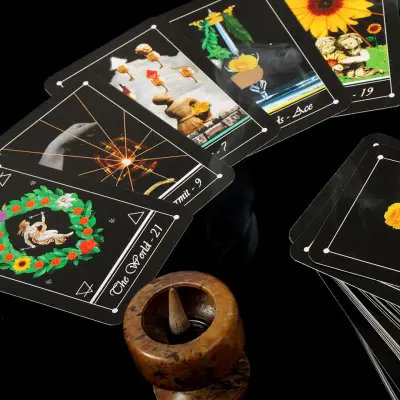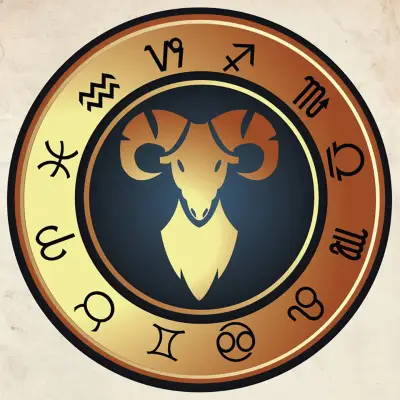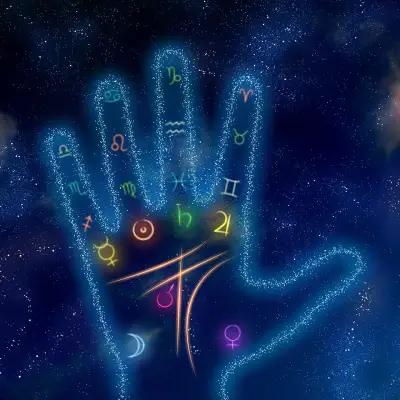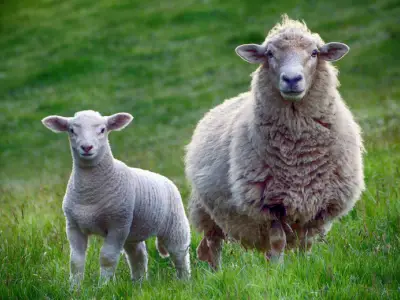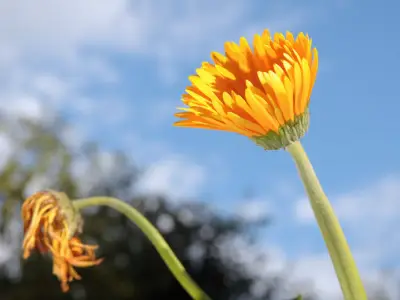The Ogham is an ancient Celtic script intertwined with the lore of sacred trees, where nature, spirituality, and ancient knowledge converge into a magical realm! In this article, we’ll explore the revered groves of the Celts, decode the Ogham alphabet, and delve into the profound rituals and beliefs that honour these living symbols of Celtic culture.
Jump to:

Celtic Sacred Trees
The Celts had a deep connection to the natural world and the forest (or "nemeton"), which was often considered to be a sacred space. Within these sacred groves, the Celts conducted rituals, sought wisdom, and communed with the divine. Each type of tree held its own significance, and many became associated with specific aspects of Celtic life and spirituality.
Oak
The oak tree, known as "Duir '' in Celtic Ogham, stood as the mighty king of trees in Celtic lore. It symbolises strength, longevity, and protection. The Druids, who were the spiritual leaders of the Celts, often conducted their rituals and ceremonies in oak groves, emphasising their sacred status.
Ash
The ash tree, referred to as "Nion" in Ogham, held an important role in Celtic cosmology as the "World Tree." It connected the earth, sky, and underworld and acted as a conduit for spiritual journeys and wisdom. Its wood was used for making tools and weapons, signifying its practical and mystical importance.
Yew
The yew tree, known as "Ioho" in Ogham, was considered the guardian of the ancestors and the gateway to the afterlife. Its long lifespan and evergreen nature symbolised endurance and immortality and were often found in ancient burial grounds, hence their association with death and rebirth.
Rowan
Rowan, or "Luis" in Ogham, was regarded as a powerful protector against malevolent forces. Its red berries were seen as symbols of life and vitality, and it was commonly planted near homes to ward off evil spirits. These trees held a special place in Celtic folklore for their protective qualities.
Birch
The birch tree, "Beith" in Ogham, represented renewal, purification, and new beginnings. Its white bark and early spring leaves symbolised the fresh start of the growing season and were associated with the concept of rebirth and cleansing rituals.
Holly
Holly, also known as “Tinne” in Ogham, was considered a token of truth and a symbol of winter's strength. Its evergreen leaves and vibrant red berries provided a contrast with the barren winter landscape and signified hope and continuity.
Hazel
The hazel tree, known as "Coll" in Ogham, was linked to wisdom and knowledge. Its nuts were often associated with poetic inspiration and were seen as a source of deep insight. Druids sought hazel groves for contemplation and enlightenment.
Apple
Apples, symbolised by "Quert" in Ogham, held enchanting qualities in Celtic mythology. They were associated with immortality, healing, and the Otherworld. Apple orchards were places of celebration and were thought to be connected to the divine.
Recommended for you!
Best SellersRituals and Beliefs
The Celts didn't just see sacred trees as symbols: these trees were also a real part of their everyday lives and culture, and they would actively connect with the trees through various rituals and ceremonies.
Tree Worship
Celtic tree worship involved a wide range of rituals and ceremonies within sacred groves. These practices were led by Druids, the spiritual leaders of the Celts, and often included the following elements:
- Offerings
The Celts made offerings to trees - such as libations of milk, mead, or other valuable items like jewellery - as tokens of respect and gratitude.
- Dances and Chants
Ritual dances and chants were performed around sacred trees to invoke their powers or to celebrate seasonal changes.
- Divination
Sometimes the Druids would practise divination, like interpreting the movement of the leaves or the shapes of the branches.
- Prayers
The Celts believed that certain trees served as conduits to the divine, and they would offer prayers and invocations to seek blessings or guidance.
These sacred Celtic trees also played an important role in various seasonal celebrations like:
- Samhain
The sacred oak was particularly significant during Samhain, the Celtic New Year, as it marked the threshold between the living and the dead. Bonfires were lit using oakwood, and offerings were made to ancestors.
- Beltane
The Maypole, which was often made from a tall birch tree, was central to Beltane celebrations. It symbolised fertility and the union of the earth and sky.
- Imbolc
Rowan trees were associated with Imbolc, which celebrated the arrival of spring and the protective qualities of this sacred tree. Rowan crosses were fashioned and displayed as a part of the traditions attached to Imbolc.
The worship of these sacred trees didn’t stop there… the Celts also believed that these trees had healing and protective properties. For example, birch bark was serious medicine for the Celts because of its cleansing qualities. The bark could be whipped up into healing pastes to treat wounds. Or it could be brewed into purifying teas people drank for inner health. Hazel nuts were used in hazel divination and were cast to seek answers and gain glimpses into the future; Druids would decipher patterns formed by the nuts' positions. Additionally, trees like Holly and Rowan were considered to be protective talismans. Rowan branches and berries were commonly placed above doorways to repel evil spirits and safeguard homes, while holly wreaths were hung indoors during the winter months and were believed to bring luck and protection, especially when darkness and evil forces were thought to be more active.

At the heart of Celtic culture lies Ogham, a unique and mysterious script that serves as the Celtic tree alphabet. Unlike conventional alphabets, each character in Ogham is associated with a specific tree or plant.
Below we’ve listed a brief overview of ALL the characters in Ogham and their symbolic link to nature.
Beith (B): is linked to the birch tree. Birch symbolises renewal, purity, and the fresh start of spring.
Luis (L): corresponds to the rowan tree. Rowan is the protector against evil forces, and its association with this character reflects its role as a guardian in Celtic folklore.
Nion (N): embodies the ash tree, which the Celts regarded as the "World Tree." It served as a bridge between the earthly realm and the spiritual realm, connecting different dimensions of existence.
Fearn (F): relates to the alder tree. The alder represents both strength and vulnerability.
Saille (S): corresponds to the willow tree, which embodies flexibility and adaptability.
Uath (H): is a more complex character, as it holds dual symbolism, representing both enchantment and protection.
Duir (D): is linked to the oak tree: the mighty king of trees in Celtic lore. Oak represents the strength and the resilience of nature.
Tinne (T): relates to the holly tree. As well as being a token of truth, holly is also a symbol of winter's strength and holds significance in both light and dark times.
Coll (C): corresponds to the hazel tree. Hazel is often associated with knowledge and wisdom.
Quert (Q): is linked to the apple tree. This character invokes the magical qualities of the apple in Celtic mythology.
Muir (M): embodies the vine or ivy which represents the bonds of friendship and connection, mirroring the way vines intertwine.
Gort (G): also corresponds to the ivy or vine. Much like Muir, it underscores the theme of interconnectedness and growth.
Ngetal (NG): is associated with the reed. Reed symbolises flexibility and adaptability in the face of challenges, highlighting the resilience of the natural world.
Straif (ST): embodies the blackthorn tree. Blackthorn carries dual symbolism, signifying both adversity and transformation.
Ruis (R): corresponds to the elder tree. Elder is associated with the passage of time and the wisdom that comes with age.
Ailm (A): is linked to the pine tree. Pine symbolises purification and clarity, aligning with the Ailm character's theme of spiritual insight.
Onn (O): relates to the furze or gorse bush. Gorse is associated with the sun and represents hope and optimism in Celtic symbolism.
Ur (U): is linked to the heather plant. Heather represents solitude and spiritual healing, making this character a reflection of inner growth.
Eadha (E): embodies the aspen tree. Aspen is known for its quivering leaves, which symbolise the transient nature of life.
Ioho (I): relates to the yew tree, a guardian of the ancestors and a symbol of immortality.
Phagos (EA): is associated with the beech tree, symbolising ancient knowledge and learning.
Uilleann (UI): Uilleann, is linked to the honeysuckle vine. Honeysuckle represents bonds of love and devotion.
Ifín (IO): embodies the gooseberry plant. Gooseberry symbolises protection and nourishment, reflecting the caring nature of this character.
Our Ogham and Tree Lore Diploma Course and Celtic Mythology Diploma Course offer an extensive journey into these ancient traditions. Each allows you to immerse yourself in the wisdom of Ogham and understand more about the intricate connections between trees and Celtic spirituality! Enrol in these courses today for just £37 (saving £110!) and begin deepening your knowledge of these fascinating subjects.

